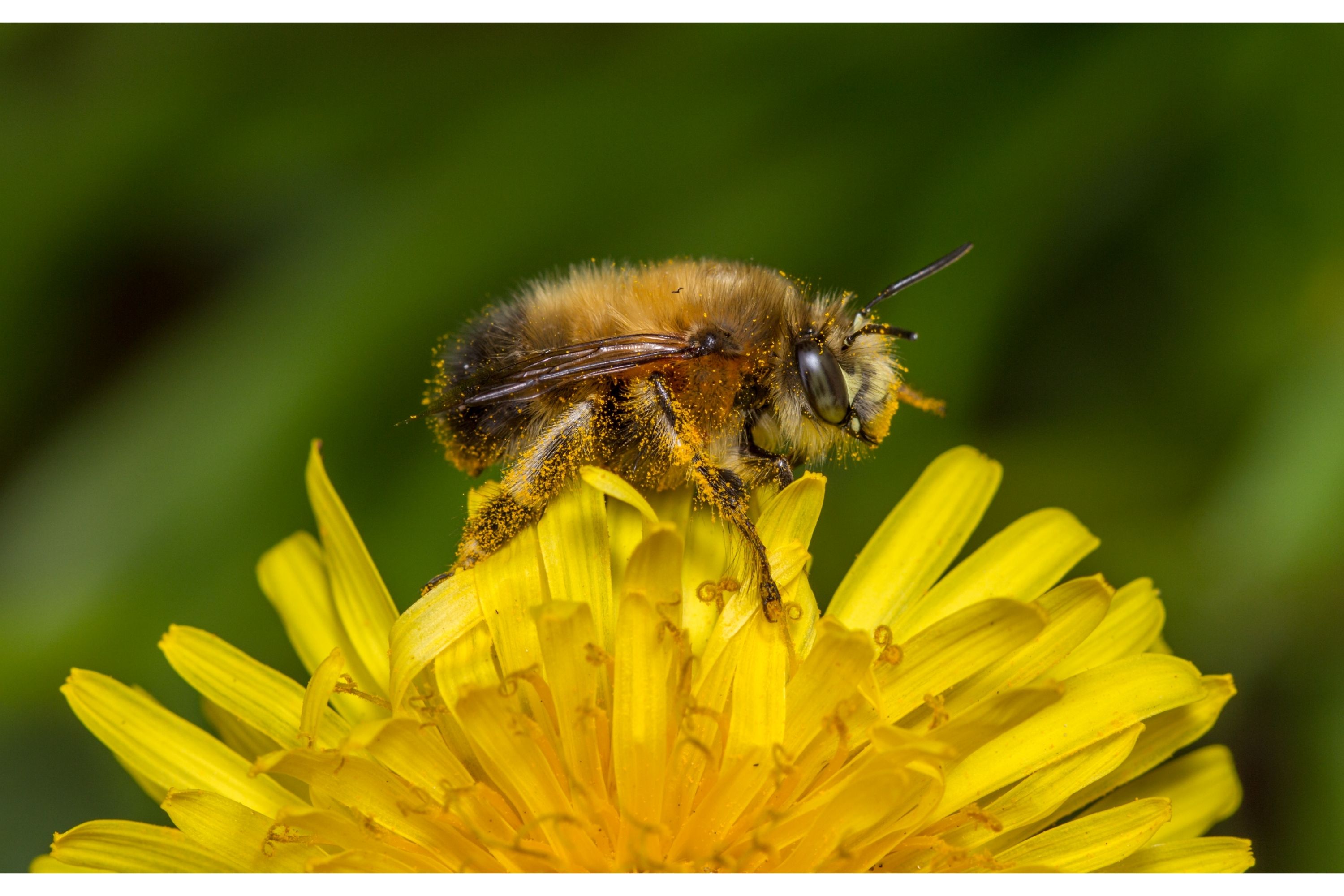Anthophora furcata
(Anthophora furcata)

Description
Anthophora furcata is a bee in the family Apidae. The bees have a body length of 11 to 12 millimeters. The females have golden brown hair, the hair is black only on the apex, the middle of the thorax and the fourth tergite. The fifth tergite has a rust-red terminal fringe. The rail brush (Scopa) is yellow-brown. The cheeks are very narrow. The males have the same hair as the females, have black hair, but also on the other tergites. Her face has yellow markings. The seventh tergite has lateral corners and is bicuspid at the end, being deeply notched in between. The species is widespread throughout Europe and inhabits forest areas, but also gardens and hedges. It flies from mid-May to early October, probably in two generations. The females build their nests in rotten wood or pulpy plant stems. They gnaw the passages and cells themselves. Pollen is collected in a specialized way from mint plants (Lamiaceae) and some figwort plants (Scrophulariaceae). Cuckoo bees of the species are Coelioxys conica and Coelioxys rufescens. The bee genus Anthophora is one of the largest in the family Apidae, with over 450 species worldwide in 14 different subgenera. They are most abundant and diverse in the Holarctic and African biogeographic regions. All species are solitary, though many nest in large aggregations. Nearly all species make nests in the soil, either in banks or in flat ground; the larvae develop in cells with waterproof linings and do not spin cocoons. Males commonly have pale white or yellow facial markings, and/or peculiarly modified leg armature and hairs. Anthophora individuals can be distinguished from the very similar genus Amegilla by the possession of an arolium between the tarsal claws.
Taxonomic tree:







